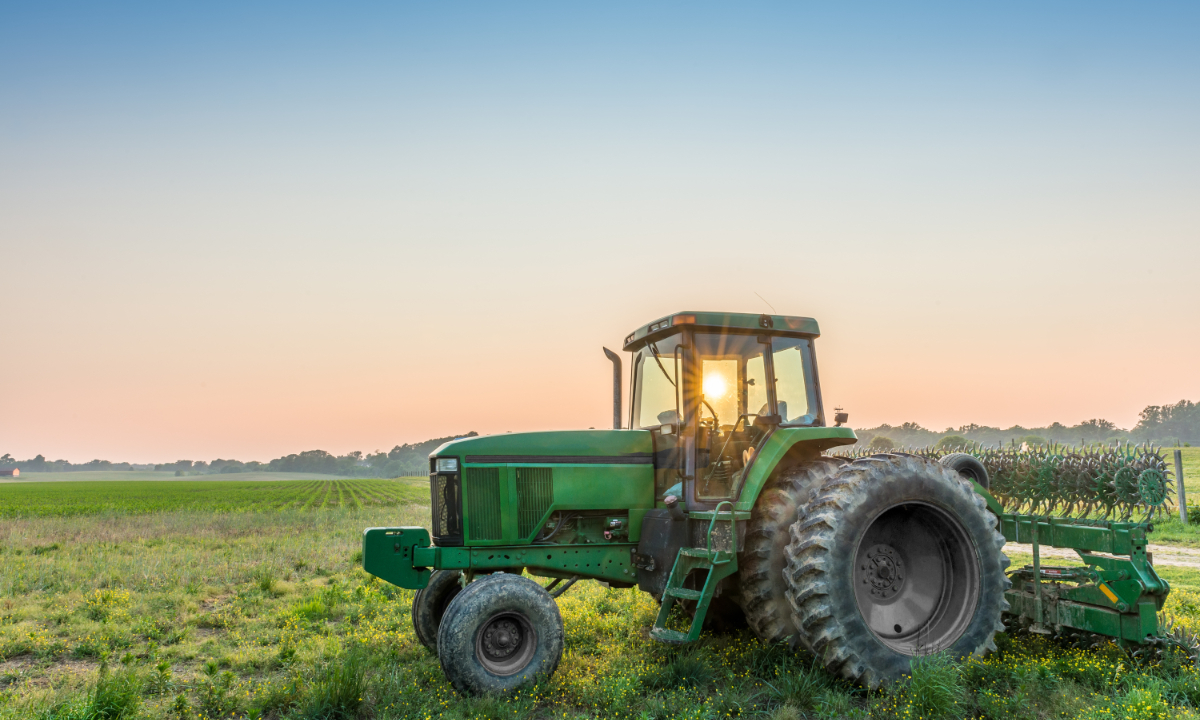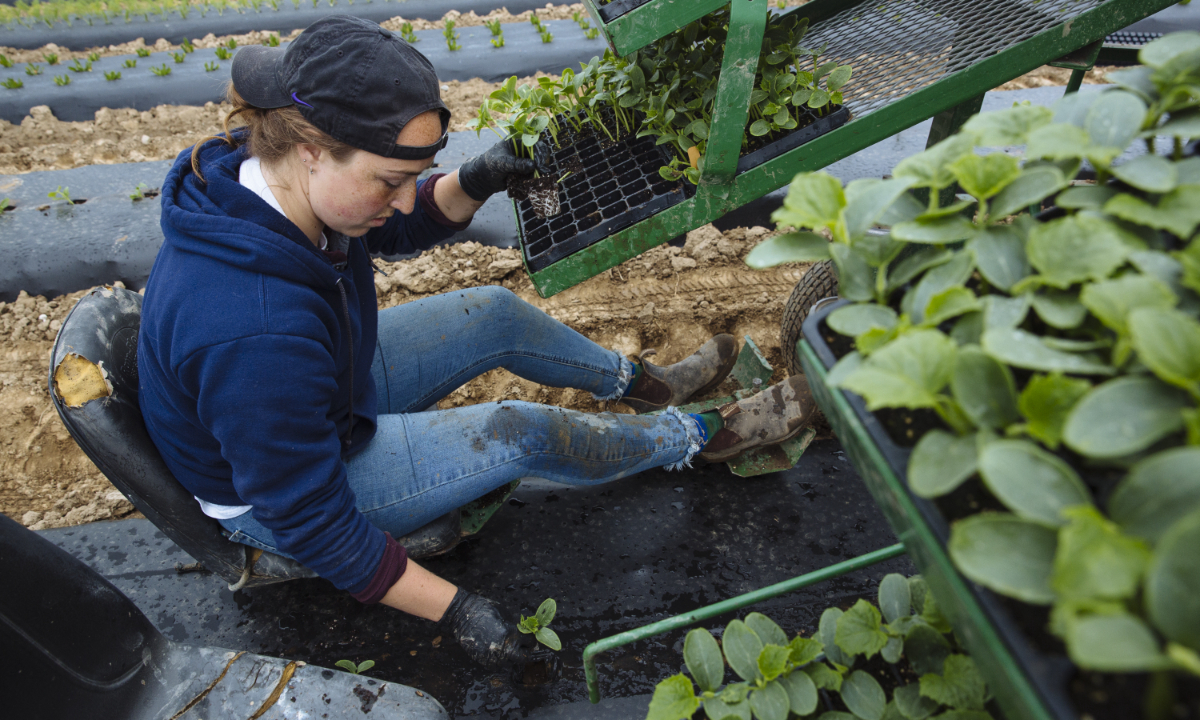
A tractor rests on a farm in Maryland, the US. Photo:VCG

A worker riding on the back of a tractor plants cucumber seedlings at a farm in Hudson, New York, the US. Photo: VCG
The owner of Deep Roots Farm in rural Maryland and her workers finished the fall harvest in November, but some of their most vital plantings are still in the ground, and growing fast.
Four species of cover crops, plants such as winter rye and hairy vetch, later removed in the spring, are key to soil resuscitation efforts underway at Deep Roots, 53 acre (214,000 square meters) of rolling hills that used to be part of a tobacco farm.
After purchasing the property two years ago, owner Gale Livingstone set about rebuilding the soil's health, by nurturing the microbiome beneath, planting cover crops, and doing no tilling at all.
The changes mean "you're going to have an abundance of harvest," the 49-year-old said.
Deep Roots is one of a rising number of so-called "regenerative" farms that are improving soil quality not only for its environmental and human health benefits but to trap more planet-heating emissions and curb climate change.
Changing farm practices could capture and store up to 250 million metric tons of carbon dioxide annually in the United States, or 4 percent of the nation's emissions, the National Academy of Sciences found in 2019.
Scientists, advocacy groups and newly formed companies are working to quantify the amount of carbon farmers store in their soil, fueling offset markets where the resulting credits are sold.
Several commodities and agriculture companies have set up carbon farming programs in recent years, drawing growing interest from companies that have made net-zero pledges and are seeking to reduce their carbon footprints, in part through purchasing offsets.
The government has also lent its support. In September, the US Department of Agriculture announced a first-ever round of grants focused on "climate-smart" commodity production, part of a $3 billion program aiming to boost crops' ability to store carbon.
"Suddenly everyone is hearing about soil carbon storage," said Lauren Miller, an executive vice president with Grassroots Carbon, a firm that connects businesses interested in buying soil carbon credits with regenerative farming operations.
Farmers "should be aware of this as another revenue stream - if they adopt regenerative practices, it will improve the soil health ... but they can also get paid for it," she added.
Yet many farmers, including Livingstone of Deep Roots and climate campaigners, are skeptical about the effectiveness of soil carbon markets.
Some are concerned they could help climate polluters who purchase offsets avoid cutting their own firms' emissions, or that the carbon stored in soils may not remain there permanently.
'Balance sheet'
Today there are around 100,000 regenerative farms in North America, according to Jonathan Lundgren, director of the Ecdysis Foundation, which is assessing hundreds of operations a year.
In doing the assessments, "we're trying to answer a few simple questions," he said.
That includes whether regenerative agriculture works no matter what you grow and where you grow it, and whether it genuinely cuts pollution, provides lasting carbon sequestration and helps battle climate change.
For example, he said, early findings from almond orchards in California suggest that farms that use regenerative practices have around 30 percent more soil carbon than conventional ones.
Another initiative, called the Soil Inventory Project, is seeking to develop a national map of soil health.
The efforts aim, in part, at "putting carbon on the farm balance sheet," said Kristofer Covey, its co-founder and president.
New structure
For now, many farmers across the United States are believed to be taking a wait-and-see attitude on soil carbon markets, especially smaller-scale producers.
An October report from the Farm Journal, a trade magazine , found that of 500 farmers surveyed, 97 percent said they would not get involved under current conditions, although nearly a third expressed interest and said they were monitoring developments.
One obstacle is the low current value of soil carbon, often around $15 to $20 per ton, said Ben Hushon, an agronomist and partner at the Mill chain of agricultural products stores, one company that has worked with farmers to experiment with soil carbon markets.
That price translates to income of around $15 to $30 per acre, according to an estimate from Duke University.
There is already rising tension over who should receive soil carbon storage payments, landowners or farmers, given that many farmers are only renting the land they work, Hushon said.
But the most frustrating aspect for many farmers, he said, is that those already growing using sustainable practices often are not rewarded, with corporations purchasing soil carbon credits mainly interested in trying to change farm practices.
"That's resulted in disappointment, frustration and anger," Hushon added.
Still, the incentives are working for Loy Sneary and his son, who raise cattle on 7,000 acres near Bay City, Texas.
They recently shifted their operations to move their herds frequently and let used pastures sit for months before the animals return.
The pair have already seen the regrowth of native grasses with deeper carbon-holding roots, Sneary said, and they have halted the use of herbicides on the land.
While the new approach took upfront investment, Sneary said carbon storage payments will let him pay off his costs by the second year.
Neighbors initially thought he was "crazy," he admitted.
"But now we have a lot of folks saying, 'Maybe we should take a second look at this,' especially now that we're getting a payment for it," he said.
Reuters

